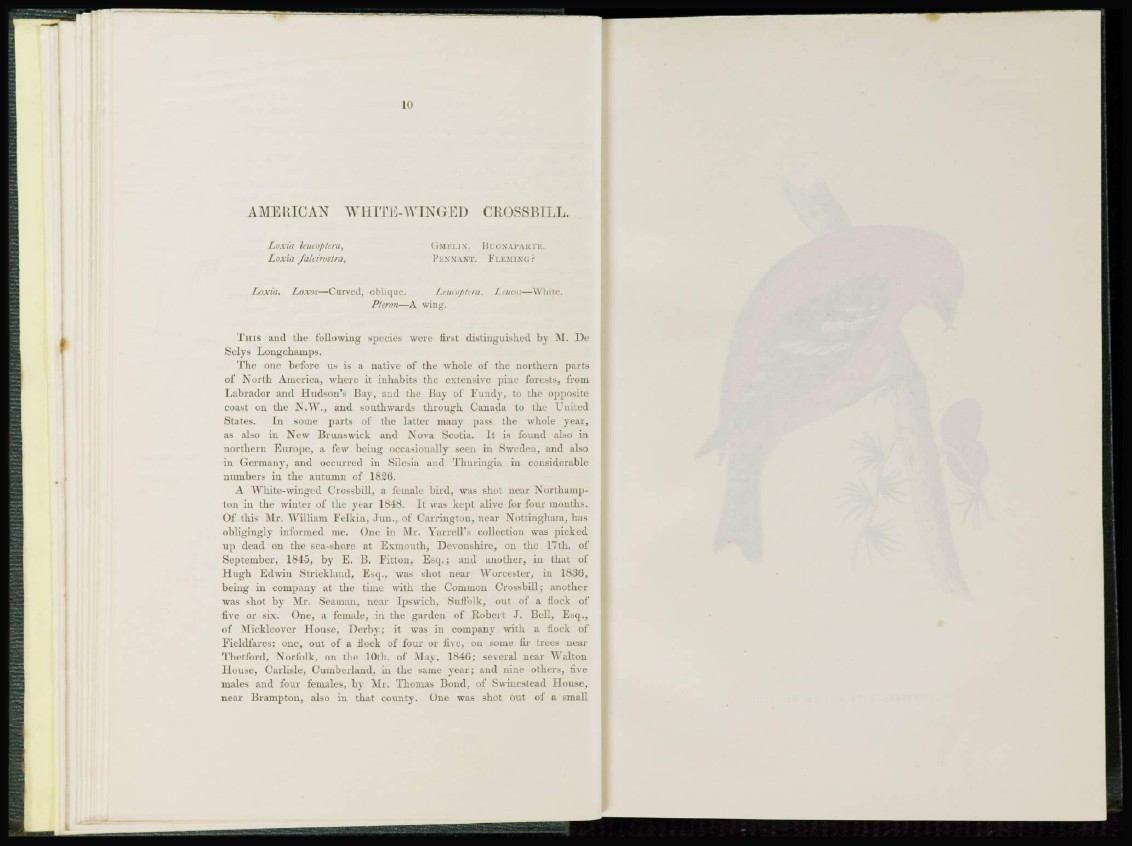
10
AMERICAN WHITE-WINGED CROSSBILL.
Loxia leucoptera, ( TMELIN. BUONAPAR'J E.
Loxia fakirostra, PENNANT. FLEMING?
Loxia. Loxos—'Curved, oblique. Leucoptera. Let/cos—White.
Pteron—A wing.
T H I S and the following species were first distinguished by M. D e
Selys Longchamps.
The one before us is a native of the whole of t h e n o r t h e r n parts
of North America, where it inhabits the extensive pine forests, from
Labrador and H u d s o n ' s Bay, a n d t h e Bay of F u n d y , to the opposite
coast on t h e N . W . , and southwards through Canada to the United
States. In some parts of the latter many pass the whole year,
as also in N e w B r u n s w i c k and Nova Scotia. It is found also in
n o r t h e r n Europe, a few being occasionally seen in Sweden, and also
in Germany, and occurred in Silesia and T h u r i n g i a in considerable
numbers in the a u t u m n of 1826.
A White-winged Crossbill, a female bird, was shot near Northampton
i n the winter of t h e y e a r 1848. It was k e p t alive for four months.
Of this Mr. W i l l i am F e l k i n , J u n . , of C a r r i n g t o n , near- Nottingham, has
obligingly informed me. One in Mr. Y a r r c l l ' s collection was p i c k ed
up dead on the sea-shore at Exmouth, Devonshire, on t h e 17th. of
September, 1845, b y E. B. F i t t o n , Esq.; and another, in that of
H u g h Edwin Strickland, Esq., was shot near Worcester, in 1 8 3 6 ,
being in company at the time with the Common Crossbill; another
was shot by Mr. Seaman, near Ipswich, Suffolk, out of a flock of
rive or six. One, a female, in the g a r d e n of Robert J. Bell, E s q . ,
of Miekleovcr House, Derby; it was in company with a flock of
F i e l d f a r e s : one, o u t of a nock of l o u r or five, on some fir trees near
Thetford, Norfolk, on the 10th. of May, 1846; several near Walton
H o u s e , Carlisle, Cumberland, hi t h e same year; and n i n e others, five
males and four females, b y Mr. Thomas Bond, of Swinestead House,
near Brampton, also in that county. One was shot out of a small